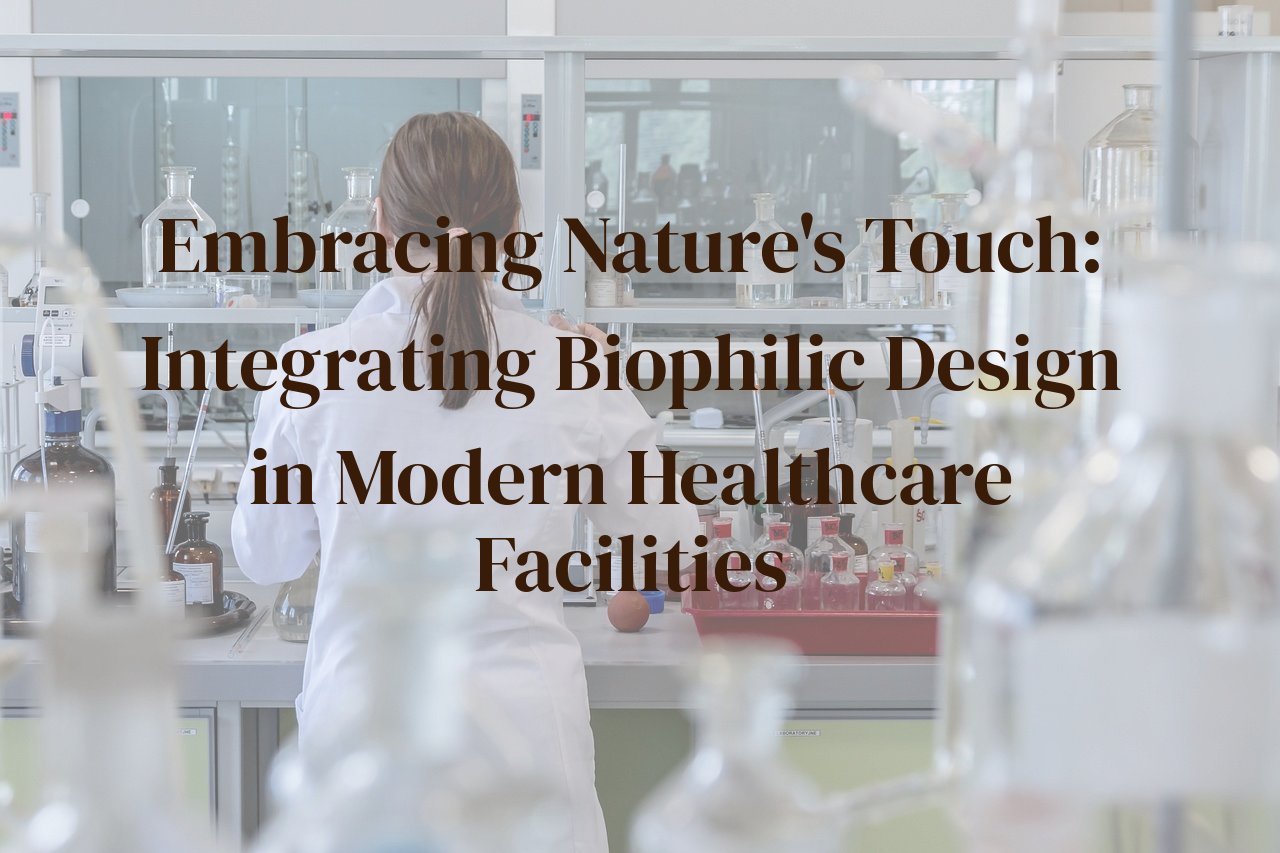
In the midst of technological advancements and sterile clinical environments, a refreshing approach to hospital design is taking root. This blog post delves into the intertwining of nature with modern medical spaces — a concept gaining momentum as ‘biophilic design’ in healthcare settings. We shall embark on a journey to uncover how this design philosophy fosters patient recovery and enhances the wellbeing of healthcare workers. By embracing biophilic elements, hospitals can become sanctuaries of health, merging ecological beauty with therapeutic care.
Readers will find insights on the implications of this rising trend, its impact on patient outcomes, and practical ways healthcare facilities are incorporating nature into their very fabric. Whether you are a healthcare professional, designer, or simply someone interested in the evolution of hospital spaces, this narrative will shed light on the beneficence of biophilic design and its profound implications on human health.
Table of Contents
Breathing Life into Healing Spaces: An Overview of Biophilic Elements in Hospitals
The concept of biophilic design transcends the conventional architecture of sterile, white-walled medical hubs by weaving nature’s tapestry into the very fabric of healing spaces. As a health and wellness enthusiast with an eye for design, I’ve witnessed the transformative power of biophilic elements harmonizing with healthcare environments, creating a sense of calm and comfort for those within.
In the heart of these hospitals, indoor gardens serve as serene sanctuaries for reflection and respite. Not merely ornamental, these green oases diminish stress by connecting patients to the rhythmic cycles of life flourishing around them. Natural lighting, another fundamental principle of biophilic design, filters through expansive windows, bathing patients in the warmth of the sun, aligning their circadian rhythms, and uplifting their spirits.
Throughout the hallways and rooms, materials such as wood and stone are incorporated, embodying nature’s textures and hues and subtly reminding inhabitants of the outdoors. Artwork depicting landscapes, water bodies, and botanical motifs further engage the senses and instill a feeling of belonging to the larger, living world.
Even the auditory experience is not left unattended; subtle soundscapes that mimic the gentle rustle of leaves or the soft cascade of a distant waterfall add an auditory dimension to the healing process. Meanwhile, healing gardens and outdoor terraces provide not just aesthetic pleasure, but spaces for physical therapy and rehabilitation in the embrace of open skies and fresh air.
By infusing medical environments with these life-affirming elements, I have witnessed a remarkable shift in patient engagement and well-being. It’s as if the walls take a gentle breath, inviting those encased in their care to recenter and regain strength grounded in the nurturing essence of the earth. As the trend of biophilic design in hospitals gains momentum, I’m heartened to see the growing recognition that health is not simply about medicine, but environment and emotional state as well.
Scientific Roots: Understanding the Health Benefits of Biophilic Design
Throughout my journey exploring the vibrant nexus of healthcare and nature, I’ve been entranced by the profound relationship between hospital design and patient recuperation. Time and again, I’ve witnessed the transformative power of biophilic design—an approach that seeks to seamlessly weave natural elements into the built environment for enhanced well-being. In digging through research articles, I’ve unraveled substantial evidence elucidating the scientific underpinnings of biophilic design’s health benefits. Let me walk you through a few.
One pivotal study underscores the role of natural light in regulating circadian rhythms, fundamental to the process of healing. Daylight suffusing through expansive windows can aid patients in recovering more swiftly, aligning their internal clocks with the natural day-night cycle. This synchronization has been linked to improved sleep quality and a boost in mood, pivotal factors in patient recovery.
Another cornerstone of biophilic design is the incorporation of plant life and green spaces. Plants are not mere accessories; they are living purifiers that serve by sprucing up air quality. The verdant companions in a patient’s room or therapeutic gardens can absorb pollutants, fostering a breath of fresh air, quite literally. Their presence is also associated with stress reduction, providing a calming presence that endows spaces with an aura of tranquility.
Access to natural vistas and elements such as water features can act as non-pharmacological interventions, reducing the necessity for pain medication. One seminal investigation showed that merely gazing upon a natural scene or greenery can precipitate a decrease in systolic blood pressure, speaking to nature’s innate ability to soothe the human psyche.
Today’s healthcare architects are harnessing the healing power of acoustic comfort, ensuring the auditory experience within medical spaces is reminiscent of serene natural settings. The dulcet murmurs of a fountain or the subtle rustle of leaves can serve as a balm to frayed nerves, decreasing heart rates and fostering a milieu conducive to healing.
Apart from these individual elements, biophilic design endorses a holistic spatial composition that encapsulates the essence of nature in tangible and intangible ways. Strolling through biophilically-designed hallways, I’ve sensed a collective uplift in spirit among patients and healthcare workers alike—affirming the multiplicative effect of environmental synergy on human health.
Real-World Healing Havens: Case Studies of Biophilic Hospitals
Wandering through the luscious green interiors of the Khoo Teck Puat Hospital in Singapore, one cannot help but feel a rush of serenity amidst the urban hustle. As a testament to the transformative power of biophilic design, this hospital features waterfalls, internal courtyards, and rooftop gardens that create a sanctuary for healing. The integration of natural light, garden views from patient rooms, and the presence of flora and fauna reduce stress and enhance patient recovery. Each element harmoniously blends to foster a sense of well-being typically foreign to traditional medical institutions.
Across the globe in America, the Dell Children’s Medical Center of Central Texas embraces natural elements that soften the typical sterility of hospital environments. With healing gardens providing therapeutic spaces and interactive landscapes for children, the hospital’s design encourages outdoor activities, which are crucial for the emotional health of young patients. The use of nontoxic building materials and ample daylight exemplifies commitment to holistic well-being, a feature I applaud for its sustainable approach to healthcare.
Meanwhile, in the quaint town of Åhus, Sweden, the Tågaborg Family Health Center stands as a pioneer in Scandinavian simplicity and biophilic architecture. The facility’s wooden aesthetics and exposure to natural environments promote an atypical calmness in both patients and healthcare professionals. It is here that I observed the seamless flow between outdoor and indoor spaces, with large windows and skylights providing a therapeutic connection with the diurnal rhythm. Their design philosophy considers the intrinsic relationship between humans and nature, imparting a lesson that modern healthcare should increasingly heed.
These case studies exemplify the diverse ways biophilic design can manifest within healthcare facilities, each representing a unique interpretation of embedding the natural world into the fabric of clinical care. The broad spectrum of biophilia, from indoor plants to complex greenroofs, illustrates that there are multiple avenues through which hospitals can bring the healing touch of nature to patients and staff alike, thereby recognizing nature’s role as an indispensable partner in the journey to health and well-being.
Designing with Nature in Mind: Practical Applications in Hospital Architecture
What an immense joy it is when I walk into a hospital infused with natural light, the walls adorned with serene landscapes, and where the presence of greenery can be felt at every turn. Such hospitals seem to have understood the essence of biophilic design, and I have marveled at their architecture. I envisage well-lit atriums that serve not only as passages for people but also as spaces that allow daylight to permeate the soul of the hospital, creating an atmosphere that promotes recovery.
As an expert blogger in the realms of medicine, health, and dietary therapy, I have had the pleasure of experiencing the tranquility brought by carefully designed healing gardens. These gardens are accessible to patients, encouraging movement and engagement with the natural world. I recall a particular patient who, despite her ailments, would find respite among the rustling leaves and blooming flowers, indicating a true connection between her wellbeing and the living, breathing space around her.
The incorporation of natural materials in hospital interiors is a subtle yet powerful approach to draw the outdoors inside. From stone countertops mimicking the rugged textures of a riverbed to wooden slats on ceilings that recall the sensation of walking beneath a canopy of trees, these tactile elements induce a sense of calmness and inherently promote healing.
In my travels, I have come across hospitals that strategically installed expansive windows and balconies, not only to exploit the captivating views of nature but also to facilitate a genuine bond between patients and the ebb and flow of life outdoors. Witnessing the changing seasons through those windows can act as a soothing balm to the unsettled mind.
Lastly, I revel at the thought of art installations that reflect the natural world. Murals depicting sprawling landscapes, interactive digital displays that echo the sounds of nature, and sculptures that emulate the fluidity of water. These artistic endeavors offer a multisensory experience that can reduce stress and enhance patient recovery. My personal encounters with such artistic expressions have invariably left me with a sense of inner peace and an understanding of their powerful impact in healthcare environments.
Beyond Aesthetics: The Psychological and Emotional Impact of Natural Elements in Medical Settings
The intertwining of nature within the clinical landscape of modern healthcare facilities transcends mere aesthetic appeal. As an experienced health and wellness blogger, I’ve witnessed first-hand the transformative power that biophilic design holds in nurturing patients’ psychological and emotional well-being. Incorporating elements such as natural light, indoor plants, water features, and views of nature doesn’t just beautify the space; it acts as a catalyst for healing the human spirit.
Imagine the tranquility that envelops you when a gentle cascade of water greets your ears or the serenity that a lush garden vista offers your eyes. These are not just pleasantries—they are therapeutic interventions without the label. Research has shown that exposure to natural elements can decrease stress, improve mood, and enhance cognitive function. The soft rustle of leaves, the dappled sunlight, the scent of flowers—all contribute to a calming atmosphere, reducing anxiety and promoting relaxation.
From a young child to an elderly patient, the psychological response to such stimuli is deep-rooted and universal. There’s a noticeable shift in the aura of hospital spaces that embrace biophilic design—a shift towards warmth and vitality that stark, sterile environments lack. In my conversations with healthcare professionals and patients alike, the sentiment resonates: the presence of nature can be a silent companion through the recovery journey, an unspoken yet deeply felt source of comfort.
Moreover, the emotional impact of these natural elements fosters a sense of optimism and hope. For those fighting illnesses, a connection to the natural world offers a mental escape from the confines of their health challenges. It’s a bridge to the outside world, a reminder of the beauty that life holds despite the current circumstances they face within hospital walls.
In essence, biophilic design in medical settings becomes a balm not just for the body but for the soul. As I delve deeper into this realm through my blog, it’s clear that these design choices are not mere trends but essential components in carving pathways to holistic healing—a testament to the profound interplay between our surroundings and our internal states of being.
Conclusion
Through the lens of biophilic design, we can envision hospitals not merely as structures of steel and stone, but as living, breathing organisms that contribute actively to the healing process. By incorporating natural elements into healthcare facilities, we pave the way for a future where the boundary between the organic and the artificial becomes blurred. A future, where patients and staff alike are nurtured by an environment that is both scientifically advanced and inherently human.
In our exploration, it becomes clear that embracing biophilic design is more than a trend; it is a conscientious step towards holistic health and wellness. As we close this narrative, let’s carry forward the idea that harmonious spaces can, and indeed should, be cultivated — for the sake of our bodies, our minds, and the very essence of our well-being.



